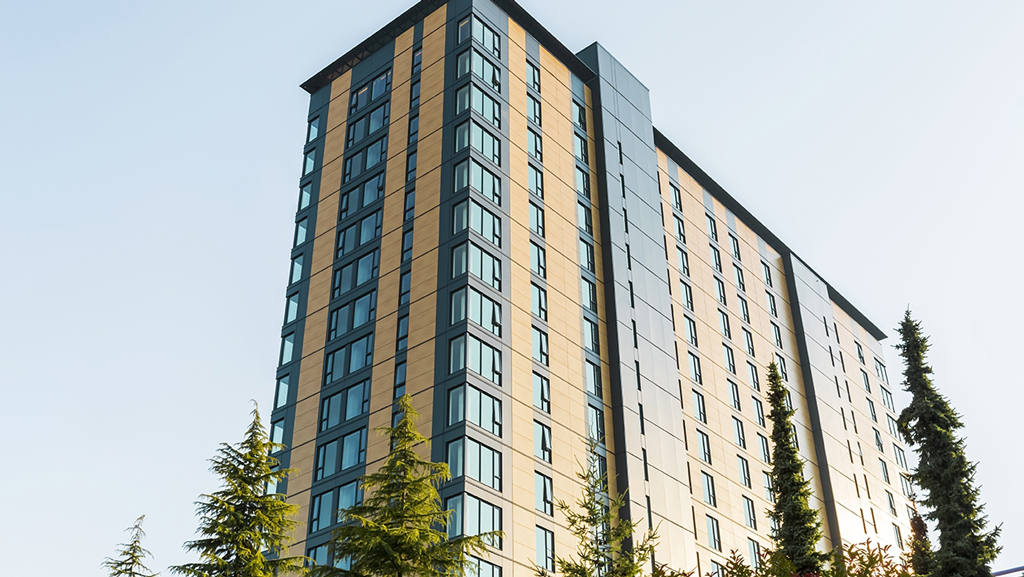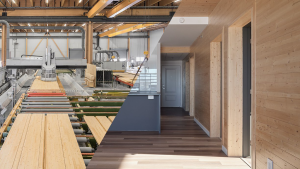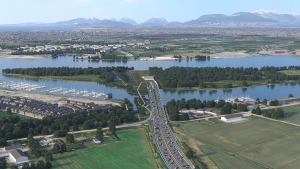A tall wood initiative in B.C. that permits mass timber residential and commercial developments up to 12 storeys is expanding with 21 communities now on board, plus Vancouver which has its own similar program.
“More and more keep expressing interest, so where we’ve decided to put our focus is on building code changes,” Jobs, Economic Recovery and Innovation Minister Ravi Kahlon told the Journal of Commerce in an interview.
“Certainly our hope is that as we move forward, the next generation of the B.C. Building Code will be closely harmonized where it’s possible with the National Building Code. Our hope is we won’t need to have individual communities sign on to the initiative, every community can just start to build with this technology.”
The City of New Westminster is the latest to join the growing list of B.C. municipalities.
The initiative, introduced in 2019, invited local governments to submit an expression of interest to be early adopters of mass timber technology for construction of buildings up to 12 storeys ahead of anticipated changes to the National Building Code which is expected to be released this year and eventually be reflected in the B.C. Building Code. Presently, mass timber buildings of six storeys are permitted.
Kahlon said the mass timber initiative supports the province’s CleanBC climate goals of making every building more efficient, it encourages construction of more sustainable buildings with smaller carbon footprints, and creates more jobs and economic opportunities while also supporting B.C.’s forest sector.
“So it really is a triple-word score. It hits a lot of checkmarks for us as a province. It’s not often in government where you get an opportunity to hit all three boxes with something that people are excited about but this is one of them.”
A number of demonstration projects have been built, including the 18-storey Brock Commons Tallwood House at the University of British Columbia, the six-storey Wood Innovation and Design Centre in Prince George, and the Upper Skeen Recreation Centre in Hazelton.
The estimated carbon benefit from the wood used in the Brock Commons building, for example, was equivalent to taking 511 cars off the road for a year.
Kahlon said the province has some of the leading companies when it comes to innovation and some of the most forward-thinking thinkers and sees an opportunity to change the landscape in B.C. with more environmentally friendly products, and also export products and knowledge.
Roberto Pecora, director of the Zero Emissions Building Exchange in Vancouver, said the initiative is good for B.C.’s wood industry.
“It will likely lead to an increase in demand for high-value wood products. This will very likely have economic benefits for both small and large urban centres. In my view, it reflects the continued maturing of the B.C. wood industry.”
He noted, however, that building with wood does not necessarily imply that a building is green, and to minimize a building’s carbon footprint, one must focus on both material carbon emissions and operational emissions.
The most effective way to reduce operational emissions in B.C and other provinces with low-carbon electrical grids is to build all-electric buildings – ideally highly energy-efficient ones, he said.
“Wood is often used as a means to tackle material carbon-embodied emissions, but using wood is not a panacea. If the wood is harvested in a way that releases more CO2 in the process than the final product sequesters, or if it is harvested in a way that greatly reduces the forest’s ability to recover and grow back quickly, then we may have a problem.
“Using wood that is certified, by a third-party, to meet stringent sustainable forestry practices can reduce the risk of causing more harm than good.”
For Kahlon, though, adopting mass timber is a “no-brainer” for local governments.
“This type of construction has less noise so you have less people onsite and a lot of the cutting is happening off-site. There’s less disruption to local businesses because there’s less traffic and products moving in, and it allows them to have climate-friendly buildings.”
Although there’s a great deal of interest, there’s a lot of education that needs to happen in the insurance and building and development community, explained Kahlon.
“I say to anyone that’s in the building or the development community, either you’re ahead of this or you’re behind, and I assure you that catching up later is going to be more expensive than the cost associated with getting in early. We’re starting to see that.”
The province has funded a host of mass timber demonstration projects to show the power of building with mass timber. The government is also working on a mass timber action plan which should be ready soon
“The idea is to change the way we build for the future and start looking at what does the future of construction look like given that we have so much change happening,” said Kahlon. “Our ultimate goal was to move mass timber from ideas to mainstream. The action plan will lay out the steps that are required for us to do that.”











Recent Comments
comments for this post are closed